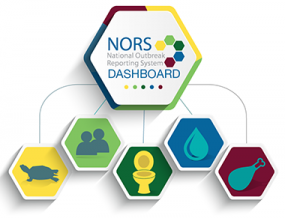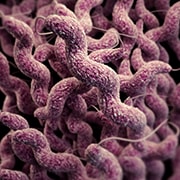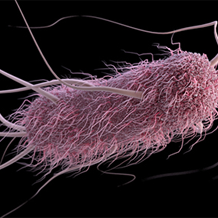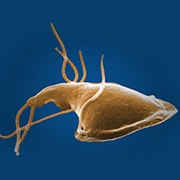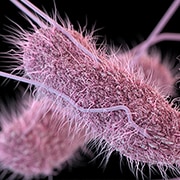Questions and Answers about Animal Contact Outbreaks
About the surveillance system
ACOSS is CDC’s system for collecting and reporting data about enteric (intestinal) illness outbreaks in the United States linked to contact with animals or their environments.
ACOSS gets reports through the National Outbreak Reporting System (NORS). NORS also receives reports on outbreaks of illnesses transmitted by food and water, and outbreaks of enteric diseases transmitted by contact with infected people, environmental sources, and unknown modes of transmission.
ACOSS collects information about enteric illness outbreaks linked to contact with animals or their environments. This information includes:
- Date and location of the outbreak
- Number of ill people and their symptoms
- Type of animal
- Setting in which the outbreak occurred
- Pathogen (bacterium, virus, or parasite)
State, local, and territorial public health agencies and CDC conduct surveillance for infections. When public health officials hear about a group of people who got sick, or laboratory surveillance shows more than the expected number of infections, they can conduct an outbreak investigation. Agencies report outbreak investigations through NORS. ACOSS includes all outbreak investigations with animal contact as the primary mode of transmission.
Each year in the United States, an estimated 450,000 illnesses, 5,000 hospitalizations, and 70 deaths result from enteric infections linked to contact with animals or their environments.
Although only a small portion of all illnesses are linked to outbreaks, the surveillance and reporting of animal contact outbreaks provide valuable insights into the pathogens, animals, settings, and other factors related to these illnesses. Knowing more about outbreaks increases our understanding of germs and their effects on human health. This knowledge helps CDC and its partners develop prevention measures.
You can get information about animal contact outbreaks reported to CDC by
Background Information
CDC defines animal contact as contact with an animal source, such as one or more of the following:
- An animal
- An animal’s body fluids (except milk and other fluids consumed as food)
- An animal’s fur, hair, feathers, scales, or skin
- An animal’s food
- An animal’s environment, which includes places it lives and roams, such as farms, schools, petting zoos, and pet stores
CDC defines an animal contact outbreak as two or more people with the same enteric illness linked to contact with a common animal source.
Enteric pathogens are bacteria, viruses, and parasites that cause disease after entering the body through the gastrointestinal tract. The following enteric pathogens have caused most outbreaks reported in ACOSS:
An enteric illness is an illness with prominent symptoms or signs involving the gastrointestinal tract. Common symptoms and signs are diarrhea, nausea, vomiting, stomach cramps, and upset stomach. Most enteric illnesses are mild, lasting a few hours to several days. However, some lead to hospitalization, long-term health problems, or even death.
Zoonoses or zoonotic diseases are infections caused by bacteria, viruses, and parasites that can be passed from animals to humans. Some zoonoses are enteric illnesses, but not all enteric illnesses are zoonotic. The illnesses reported in ACOSS are caused by enteric pathogens that are zoonotic (such as Salmonella, E. coli, Campylobacter, and Cryptosporidium), so they are referred to as enteric zoonoses.
No. Enteric pathogens can spread to people through various means, including through food, water, contact with people and animals, and environmental sources. ACOSS only captures enteric disease outbreaks caused by pathogens that are transmitted by animal contact.
Public health officials report all foodborne, waterborne, and enteric disease outbreaks transmitted by contact with people or animals, environmental sources, and unknown modes of transmission to CDC through the National Outbreak Reporting System (NORS). You can search and access outbreak data reported through NORS on NORS Dashboard.
ACOSS uses its animal categorization scheme to categorize animals into three increasingly specific levels: biologic class, major group, and subgroup. These categories can help public health, regulatory, and animal health professionals use data collected in ACOSS in a consistent manner.
The size and scope of an outbreak inform which public health agencies are involved in its investigation. Sometimes one agency starts an investigation and more agencies become involved as more illnesses are found across county or state lines.
- Local health agencies: Public health officials in a city or county health department investigate most outbreaks.
- State health agencies: State health department officials are usually involved in the investigation of outbreaks that spread across several cities or counties.
- The state health department may work with the state department of agriculture to investigate animal contact outbreaks.
- State officials communicate with their counterparts in other states when an outbreak involves ill people, businesses, or other venues from both states. State officials communicate with CDC about investigations with unusual features.
- CDC: CDC coordinates the investigation of outbreaks with ill people in more than one state. CDC works with the Food and Drug Administration and the U.S. Department of Agriculture during investigations of multistate outbreaks that could be due to products, including animals, under their regulatory jurisdiction. State officials sometimes invite CDC to assist with single state outbreaks that are unusual or severe.
Learn more about CDC’s role in investigating enteric zoonotic outbreaks >
The following tips will help you stay safe when in contact with pets and other animals or their environments.
- Wash your hands thoroughly with running water and soap:
- After touching or playing with your pet
- After feeding your pet or handling pet food
- After handling pet habitats or equipment (cages, tanks, toys, food and water dishes, etc.)
- After cleaning up after pets
- After leaving areas where animals live (coops, barns, stalls, etc.), even if you did not touch an animal
- After removing soiled clothes or shoes
- Don’t put your hands in or around your mouth after petting or playing with animals. Keep items that have come into contact with animals out of your mouth.
- Don’t kiss pets and other animals.
- Don’t let animals lick around your mouth and face.
- Don’t let animals lick an open wound or broken skin.
- Keep pets and their supplies out of the kitchen.
- Disinfect pet habitats and supplies outside the house when possible. Never clean supplies in the kitchen sink, food preparation areas, or the bathroom sink.
Visit CDC’s Healthy Pets, Healthy People website for additional steps you can take to stay healthy around pets and other animals.
